
With Fresh Talent and Energy, Oregon Ballet Theatre Makes a Big Leap
“There are so many arms flapping!” says Xuan Cheng, her face scrunched in a mock grimace. Cheng, one of Oregon Ballet Theatre’s five principal dancers, is rehearsing the part of Odile, the black swan from Tchaikovsky’s Swan Lake, cycling through an arresting mix of repetitious, arduous work—she’s left panting as she performs the same series of leaps over, and over, and over—and affecting grace in a mirrored studio furnished with only a piano and a box of rosin. “I think it’s two arms,” counters Anthony Jones—he’s the director of the School of Oregon Ballet Theatre, and calling the shots at this rehearsal—with a smile. “I don’t think it’s that many arms.”
Just down the corridor, the company’s resident choreographer, Nicolo Fonte, works on a group dance sequence—a collaborative, joyous affair in a room of about two dozen company dancers, many of whom toss out suggestions as Fonte dances first as a man, then a woman, in a process of simultaneous invention and demonstration. Beside Fonte’s studio, OBT rehearsal director Lisa Kipp directs another group. And past her room, a closed door hides racks of brocade and velvet costumes awaiting animation. In the lobby, a handful of dancers practice steps together before rehearsal resumes. Doors open and close; visitors come and go, among them a miniature pinscher called Ziggy. Oregon Ballet Theatre, after just one year at new headquarters in the aggressively rebuilt South Waterfront district, is already very much at home.
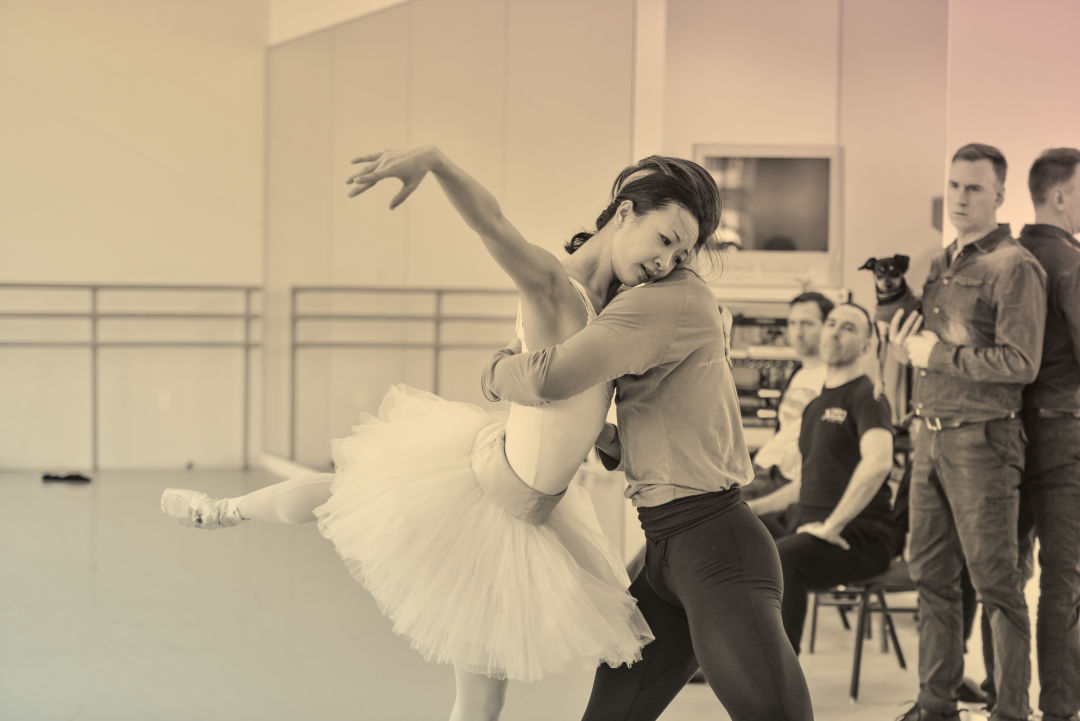
Principal dancers Xuan Cheng and Peter Franc rehearse Swan Lake, as artistic director Kevin Irving (far right) and resident choreographer Nicolo Fonto (seated) look on.
Image: Courtesy Yi Yin
The 28-year-old company’s fortunes have altered dramatically in five years. OBT, one of the city’s few multimillion-dollar arts organizations, was all but pronounced dead near the start of the decade. Formed from a merger of two competing ballet companies back in 1989, OBT had assembled a formidable creative record but hit financial trouble as the ’00s drew to a close. By 2012, the Great Recession lingered, budgets fell dramatically, and artistic director Christopher Stowell, who followed founding director James Canfield in 2003, resigned. Meanwhile, many of the company’s best loved dancers had retired—Anne Mueller, Gavin Larsen, and Kathi Martuza among them—and some OBT board members were ready to shutter the company entirely. Instead, OBT brought in Kevin Irving, a contemporary dancer turned ballet master who had worked with acclaimed choreographer Twyla Tharp and at Montreal’s Les Grands Ballets Canadiens, as artistic director of the Göteborg Ballet in Sweden, and as guest ballet master for the Royal Danish Ballet. Irving, a charismatic and eloquent advocate for the art form, calls himself a “pragmatic optimist”—which can be taken to mean he combines an ambitious sense of what ballet can do with a methodical approach to making it happen. And he knew, taking on the role at OBT, that finding a way to make ballet sustainable and relevant in a city with a wildly varied and often anti-institutional arts scene would be a challenge.
But the New York native felt Portland was still the right place for him to implement his vision. “I always had this idea that what gets people excited about any kind of entertainment can apply to ballet if it’s done right,” he says. Yet he understands why people struggle with the form. “I often felt left out of classical ballet, because it didn’t involve the qualities that I felt most strongly about, like really compelling stories—not just ‘the Prince has got to wake a Princess up.’ All the trappings of classical ballet really didn’t appeal to me much, frankly. But the dancing always did.”
Stowell had foregrounded neoclassical ballet, a marked departure from the more contemporary emphasis of Canfield. Irving, it seems, straddles both camps with credible ease. “I’ve been trying to bridge that divide and bring it together in a way that creates a new future for the company,” he says.
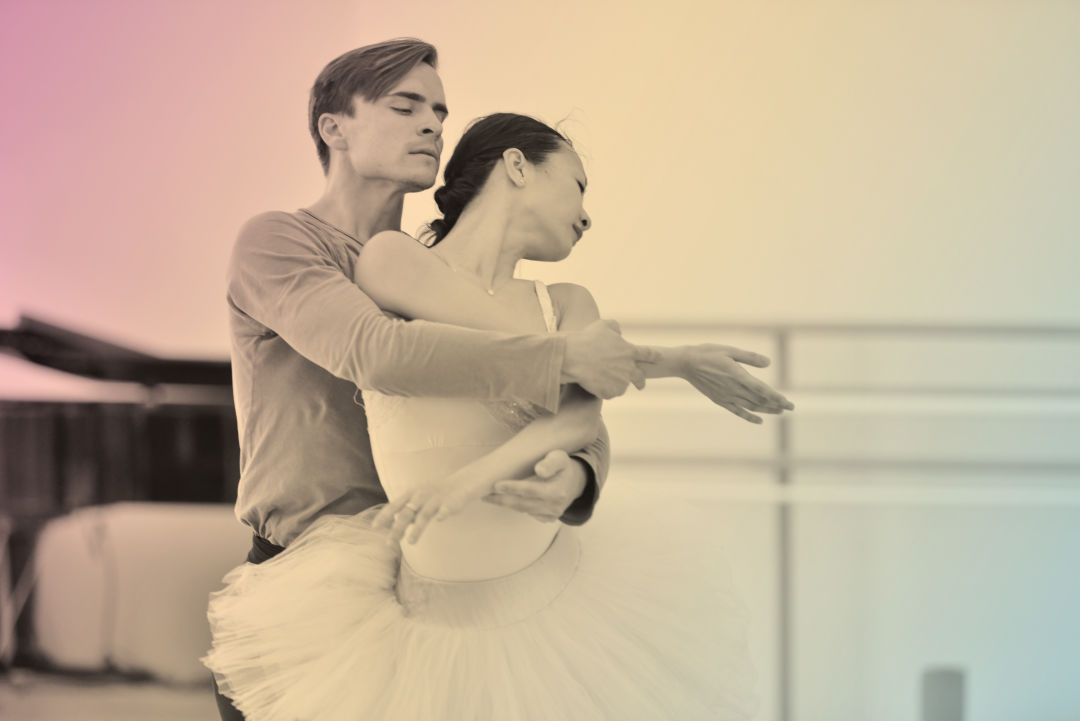
Franc and Cheng rehearse OBT's new version of Swan Lake, which premiered in February.
Image: Courtesy Yi Yin
A few years into the Irving era, that future has arrived for the company that, given its size and prominence and history, stewards its art form in a city teeming with smaller, more experimental dance outfits. (That future will include a new executive director, after Dennis Buehler departed this winter.) OBT hauled in record ticket sales for its most recent Nutcracker. At press time, ticket sales for February’s Swan Lake, the production in the works in the January rehearsals I visited, had already outpaced last year’s Cinderella, the company’s strongest-selling winter production on record.
So business is good. Beyond the box office, there’s a bold creative impetus at work. This season’s opener, Giants, served as a marker for Irving’s direction: the bill united George Balanchine’s classic Serenade with William Forsythe’s technically challenging, aggressively rhythmic In the Middle, Somewhat Elevated, and finished with Giants Before Us, a robustly contemporary world premiere choreographed by Fonte.
After the überclassical Swan Lake comes April’s Terra, featuring four much newer works that unite around themes of earth and the natural world, with pieces from revered Spanish choreographer Nacho Duato and one of America’s hottest ballet tickets, Helen Pickett. That’s it for Balanchine this year.
“I really appreciate Balanchine,” says Irving of the so-called father of American ballet. “But I also don’t feel like that was the stopping point of classical ballet. A steady diet of that, I find, can feel rather thin after a while. I feel like it’s not really enough for a city like Portland.”
Yes, you’ll get the classics from his OBT—you’ll even get Swan Lake. But you may not get it exactly the way you’re used to. “There are some parts of Swan Lake that are just so perfect, you can’t not appreciate how perfect it is,” says Irving. “But I’ve always had a number of really big problems with the piece—in terms of its length, in terms of all the many aspects of the ballet that are completely not related to the story, to the action going forward. And then the things that are meant to drive the story are so contrived and unremittingly two-dimensional.”
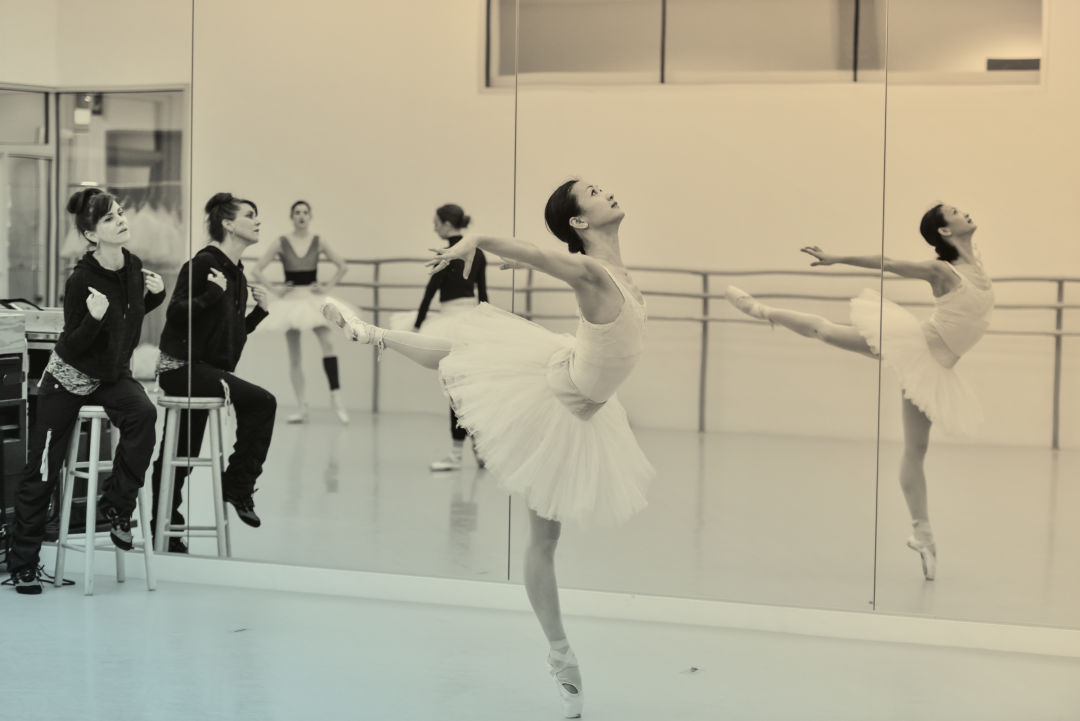
Cheng in the role of Odette/Odile
Image: Courtesy Yi Yin
In Irving’s adaptation, which ran February 18–25, the Prince—played on alternating nights by newly appointed principal dancer Peter Franc and his fellow principal Brian Simcoe—came into sharper focus. The swans still made their presence felt, with Cheng and Jacqueline Straughan taking on the dual roles of Odile and Odette. Straughan’s addition as new principal this season expanded the company roster to 27 dancers, up from 20 when Irving took over. The emphasis on rebuilding both the number of dancers and the level at which they could perform has been part of his mission from the beginning, and the results are clear.
“I think the company is dancing better than it ever has,” says Fonte, who danced with companies in New York, Montreal, and Madrid before turning full-time to choreography in 2000. He first worked with OBT during Stowell’s tenure and became its resident choreographer last March and, in December, Irving’s husband. “There is a kind of top-tier-level dancer appearing, and that’s very important.”
Cheng, one such top-level dancer, says OBT has been the right home for her to improve her dancing and feel part of a common endeavor. “Everyone is helping each other and everyone is challenging each other to get better,” she says. “And Kevin is very good at challenging dancers and pushing us forward.”
As the dancers improve and move through the ranks of junior company OBT2, formed in 2015, to the top group of performers, others are starting to gravitate to the company. “Every company I visit there’s an entourage coming to me and saying, ‘Is Kevin looking for dancers?’” says Fonte, who works with troupes all over the country. “Everyone wants to come.”
With accomplished, athletic, and technically gifted dancers, an eclectic repertoire, and a booming city, it seems natural to expect audiences to follow. But even as the fan base swells, Irving is not entirely satisfied. “Our audiences have begun to grow, that’s for sure, but we didn’t have as many people at the Keller watching Giants as I had hoped, and it certainly should have been seen by more people.”
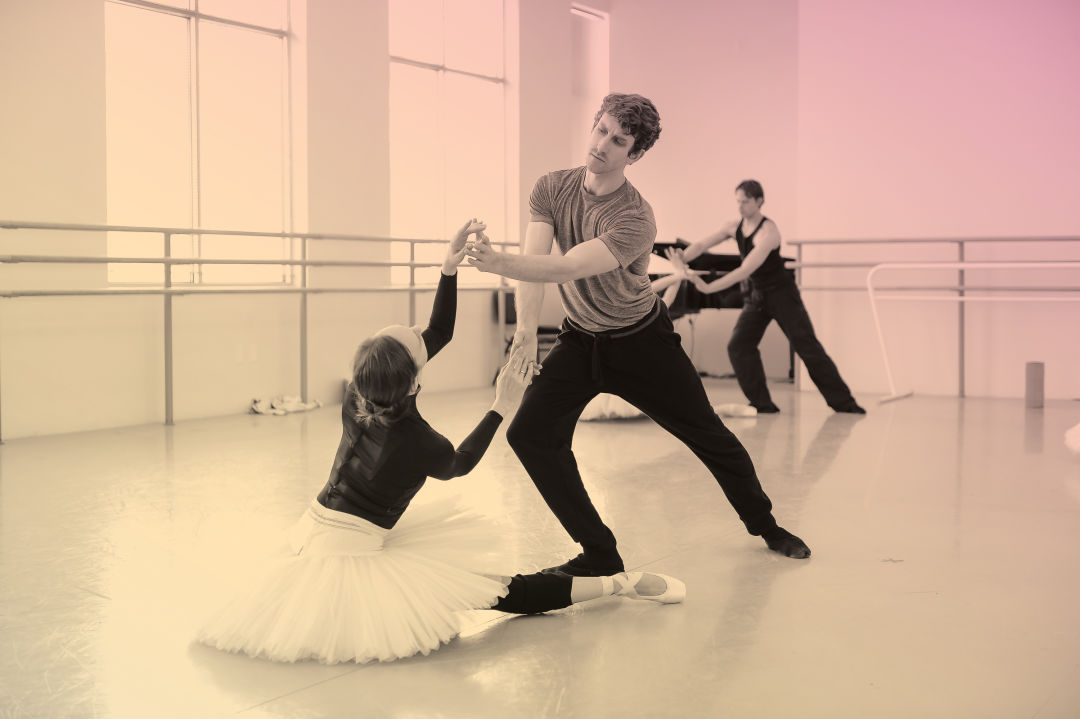
Principal dancers Jacqueline Straughan and Brian Simcoe alternated with Cheng and Franc in Swan Lake.
Image: Courtesy Yi Yin
More people is a fine aspiration, Fonte agrees, but not at any cost. He is ready to dig in against any scenario where the quest for sales compromises the company’s emerging artistic identity. “So the immediate thing is, ‘OK, what’s popular? Beyoncé! So we’re going to make a Beyoncé ballet!’” Fonte says with laugh, but he’s passionately serious, his words picking up pace as he plunges into the big question. “What is ballet? Should we all just go see Cirque du Soleil and forget about it?” The answer, for Fonte, is the “human, emotional component” as well as the arc of any ballet performance. “It takes you on a journey; it’s not a series of non sequiturs that don’t amount to anything.”
In Terra, showing in April at the Newmark, the company will present a world premiere from San Diego-born choreographer Helen Pickett to music by Jeff Beale, who won an Emmy for his House of Cards score. That might alert Netflix binge-watchers to some tenuous ballet crossover, but bringing in new eyes from outside the form’s traditional audience is worth it only if they go on to become invested in dance itself.
“What they have to fall in love with is the art form, but they have to fall in love with it in a way that’s relevant to them,” says Fonte. “You can’t just say ‘This is from the 17th century.’ [You have] to say this is a living, breathing thing, and it’s part of your city. You should own it and be proud of it. It’s a vibrant part of the artistic landscape, and it’s very young and very fresh and very athletic.”
Watching Cheng’s step and sweep across her practice floor, you can see what he means. Ballet is all those things—young, fresh, athletic, and at times heart-poundingly beautiful. And when each rehearsal studio spills onto the stage in a polished piece on performance night, maybe it will also feel relevant.
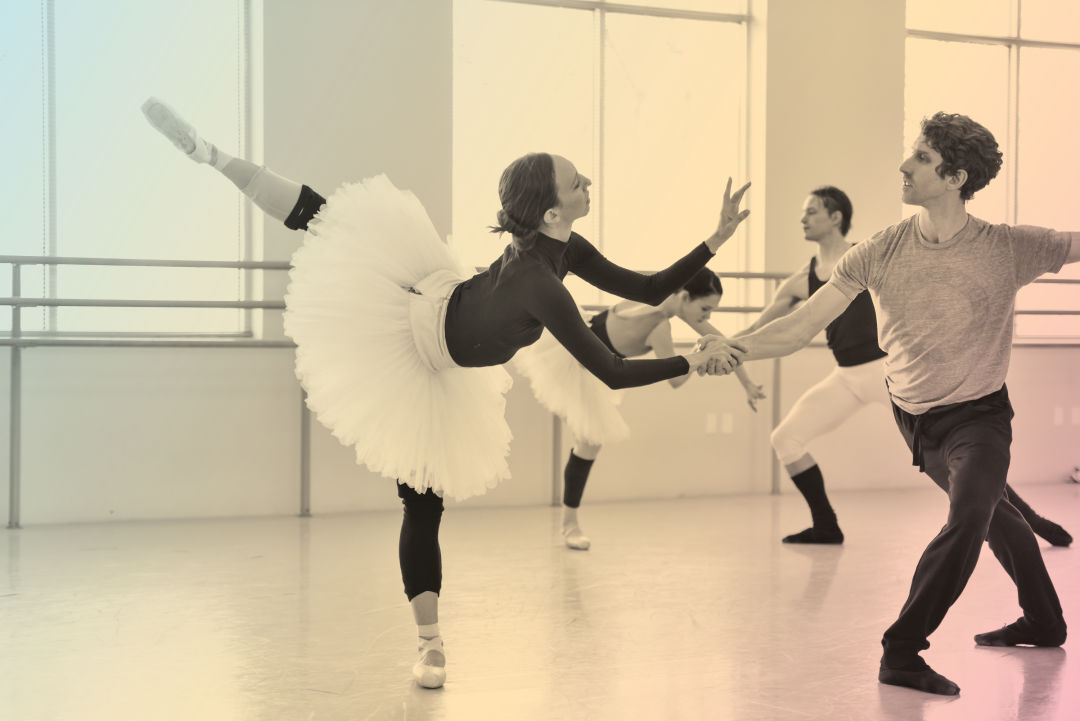
Straughan and Simcoe, again in rehearsal for Swan Lake
Image: Courtesy Yi Yin
That, at least, is Irving’s ambition for a company that’s breathing new life into a 600-year-old art form.
“We’re not going to be able to produce a work of as much thought as Ta-Nehisi Coates’s Between the World and Me,” he says, referring to the essayist’s meditation on race in America. But he notes that ballet can explore themes like the legacy of slavery and subjugation—-as in OBT’s Rassamblement from 2015—and move an audience in other ways. “That brings some of those emotions and some of that empathy to an audience in a way that’s as real and almost as concrete as Ta-Nehisi Coates,” says Irving. “And why can’t we do that?”




